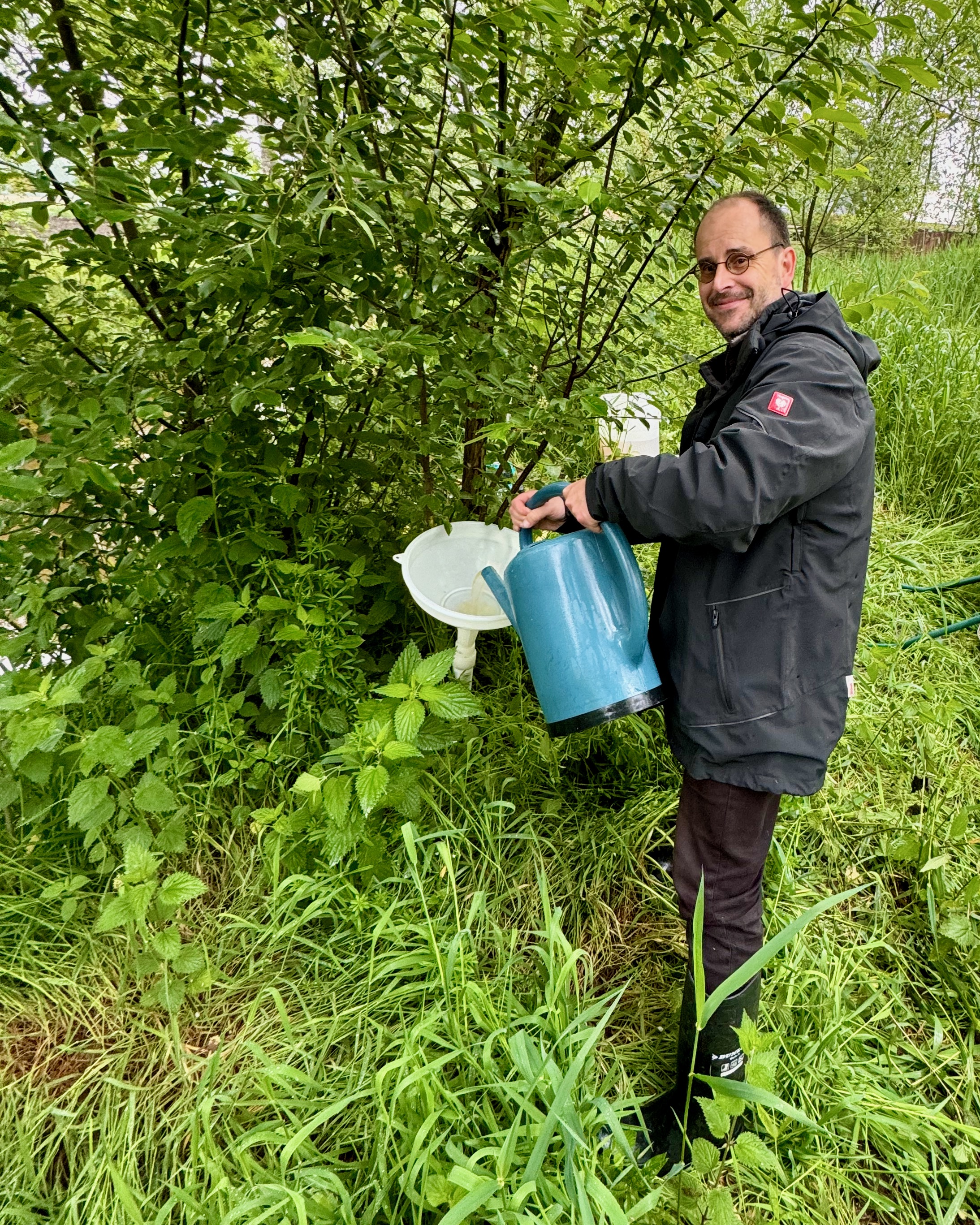Inoculation of the phytoremediation fields at the Grote Calie

The phytoremediation feasibility study for the chromium contamination on the soils along the Grote Calie found that adding microorganisms (inoculation) such as bacteria and fungi can have a beneficial effect on plant growth. This is because these microorganisms promote root development, making plants more efficient at absorbing nutrients and more resistant to stressful conditions, such as chromium contamination.
In addition, it appears that inoculation can lead to reduced leaching of chromium from above-ground plant parts. Specifically for willows, inoculation with specific microorganisms reduces the uptake of chromium into the leaves, which significantly reduces the risk of spreading contamination through leaf fall. This contributes to a more sustainable phytostabilization process and prevents the loop of chromium into the soil and ecosystem.
Moreover, the presence of these microorganisms supports the reduction of the toxic Cr(VI) to the less harmful Cr(III) form, contributing to safer and more effective stabilization of chromium in natural and agricultural areas.
To investigate the effects of inoculation, we inoculated certain areas in the pilot fields with microorganisms in May 2024. These are organisms that also occur naturally in these soils. During subsequent monitoring, we examine the effect of inoculation on chromium stabilization.
Team NARMENA
- Address
- Stationsstraat 110
2800 Mechelen
Route and accessibility - Telephone
- +32 15 284 284
- narmena@ovam.be
